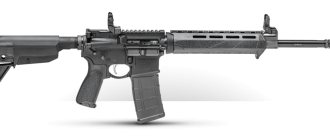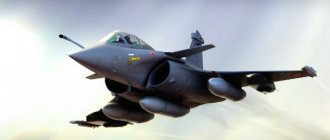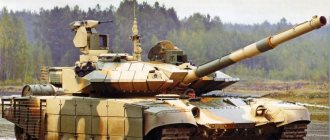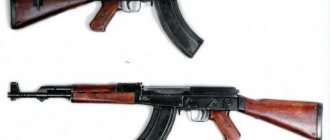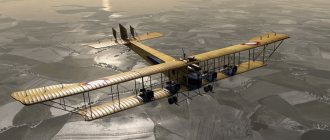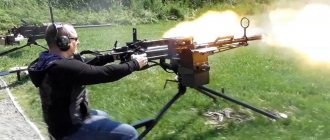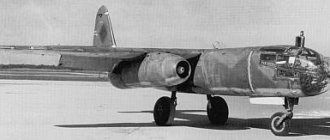B-21 Raider: Bomber or More?
Development milestones
The state's presence of strategic bomber aircraft can be considered one of the features characterizing the country's global ambitions. They are in the arsenals of the United States and Russia (USSR), China is lagging behind, but it is making great efforts to acquire these types of weapons. For other countries of the world, strategic bombers remain an unaffordable luxury.
Relics of the Cold War: Tu-95 and B-52 bombers
The question of the need for the existence of strategic bombers has been raised repeatedly. On the one hand, ICBMs appeared, which ensured incomparably faster delivery of nuclear warheads; on the other hand, the intensive development of air defense systems in the form of anti-aircraft missile systems (SAM) became a limiting factor.
All of the above, on the one hand, led to the abandonment of high-tech projects of strategic bombers such as the Soviet T-4 (product 100) of the Sukhoi Design Bureau or the American North American XB-70 Valkyrie, on the other hand, did not lead to the abandonment of strategic bombers in principle.
Unrealized strategic bomber projects: Soviet T-4 Sukhoi Design Bureau and American North American XB-70 Valkyrie
The effectiveness of strategic bombers increased significantly after the advent of strategic cruise missiles, which made it possible to attack from a long distance, without entering the enemy’s air defense zone.
However, the task of breaking through the air defense was not removed. In search of ways to solve it, various options were considered: high-altitude throw at supersonic speed, flight in terrain-following mode, or a combination of these methods. This led to the emergence of both the USSR and the USA at the same time similar, but at the same time quite different strategic bombers of a new generation, Tu-160 and B-1B, respectively, with variable wing geometry.
Strategic bombers Tu-160 and B-1B
However, in the face of modern air defense, the Tu-160 and B-1B most likely have little chance of survival, as a result of which in a war between the USSR and the USA they would most likely only be used as platforms for launching cruise missiles. At the same time, the complexity and cost of their operation, as well as the cost of a flight hour, were significantly higher than those of the “ancient”, albeit modernized, Tu-95 and B-52.
Subsequently, the construction of new Soviet aircraft was slowed down by the collapse of the USSR, and the United States relied on the maximum introduction of stealth technologies to reduce visibility, which resulted in the appearance of the most expensive bomber in the history of aviation, the B-2 Spirit from Northrop Grumman. The cost of one B-2 Spirit bomber is over 2.3 billion dollars at current prices.
B-2 Spirit Bomber
We can say that the collapse of the USSR, coupled with the prohibitive cost, “buried” the project: instead of the 132 units planned for purchase, only 21 aircraft were produced. Moreover, the complexity and cost of operating the B-2 turned out to be even higher than that of the B-1B. All this has led to the fact that the “younger” B-1B and B-2 will be “retired” earlier than the ancient B-52.
However, it is obvious that the concept of an ultra-stealthy strategic bomber has justified itself in the eyes of the leadership of the US Air Force, since the newest B-21 bomber being developed is visually a successor to the concept of the B-2 bomber.
B-21 Raider
The promising B-21 Raider bomber should become the “ideological successor” of the B-2 bomber.
The new bomber is being developed under the LRS-B program, as the B-21 was first mentioned in 2016, when the US Air Force awarded a development contract to Northrop Grumman. The planned volume of B-21 purchases is about 80-100 vehicles, with the possibility of increasing the order portfolio to 145 vehicles. Ultimately, the volume of purchases will most likely be related to the final price of the combat vehicle and its actual capabilities.
Presumably the B-21 should incorporate all the best features of the B-2 and at the same time be cheaper in terms of purchase and operation costs. The cost reduction is planned to be achieved by reducing the size of the new bomber and its carrying capacity, as well as partial unification with other American Air Force aircraft. In particular, it is planned to use two Pratt&Whitney F135 engines from the fifth-generation F-35 fighter as the power plant. Another possible alternative is the Pratt&Whitney PW9000 power plant, developed on the basis of the “civilian” Pratt&Whitney PW1000G engine, using the technologies of the mentioned Pratt&Whitney F135.
Pratt&Whitney F135 engine of the F-35 fighter
Based on the published images, analysts suggest that the B-21 bomber is optimized for flights at medium and high altitudes. It is believed that the B-2 project initially had such a configuration, but the Air Force's requirements for low-altitude flight required a more complex trailing edge configuration.
Estimated dimensions and shape of the B-21 compared to the B-2
B-21 Raider bomber projections
The first B-21 Raider bomber prototype is expected to be completed in 2022 and scheduled to take its first flight in 2022.
Insignia of the 420th Flight Test Squadron of the United States Air Force, designated "B-21 Joint Test Group"
If the information about optimizing the design of the B-21 bomber for flights at medium and high altitudes is true, then this confirms the conclusions made in the article “Where will combat aviation go: will it stick to the ground or gain altitude?”
Penetrating Counter Air
A study by the nonpartisan Congressional Budget Office and published by Defense News mentions a promising deep-penetration fighter, the Penetrating Counter Air (PCA), that would replace both the F-22 Raptor and the F-15 Eagle. This machine is conceived as the ultimate means of gaining air superiority, capable of resisting the latest developments of Russia and China, and directly above enemy territory. In this case, the tasks of hitting ground targets will be assigned to F-35 and B-21 aircraft.
Penetrating Counter Air aircraft concept
Presumably, the PCA fighter should be larger than the F-22 Raptor and F-15 due to the need to carry a large supply of weapons and fuel in the internal compartments. Its estimated cost should be $300 million per aircraft.
The Penetrating Counter Air fighter project is somewhat similar to the promising combat aircraft discussed in the article “The concept of a 2050 combat aircraft and weapons based on new physical principles.”
The appearance of the Penetrating Counter Air fighter will most likely depend on what successes the Russian and Chinese Air Forces achieve in their development. After all, if the internal economic situation in the Russian Federation and the increasing US sanctions pressure on China can restrain the development of the air force opposing the US, then what is the point of purchasing aircraft for $300 million apiece? Their tasks may well be solved by the modernized F-22 and F-35 with new weapons.
In addition, it is possible that air cover for the B-21 Raider bomber is not so necessary.
B-21 Special Features
There are a number of assumptions regarding the B-21 bomber project.
Among them, one can highlight information about the armament of this bomber with air-to-air missiles, which will allow it to resist enemy fighters, laser weapons, which will ensure the bomber’s self-defense from air-to-air and surface-to-air missiles, as well as kinetic missile defense systems. To ensure effective operation against ground and air targets, the B-21 bomber must be equipped with an active phased array radar (AFAR). It can be assumed that it will be developed on the basis of the existing AN/APG-77 and AN/APG-81 radars installed, respectively, on the F-22 and F-35 fighters. Both of these radars were developed by Northrop Grumman, the same company that develops the B-21 bomber.
AN/APG-77 and AN/APG-81 AFAR radars installed, respectively, on F-22 and F-35 fighters
Considering that the dimensions of the B-21 bomber exceed the dimensions of the F-22 and F-35 fighters, a significantly larger number of transceiver modules (RPM) can be installed as part of a promising radar, which, in turn, will increase the power of the radar, and This means its ability to detect targets and jam. In turn, the weight and size limitations of modern fighters will not allow them to install a radar with comparable characteristics. This is only possible in larger aircraft, such as the mentioned Penetrating Counter Air or the Russian MiG-41/PAK DP.
Unofficial concepts of MIG-41/PAK DP
Also, the B-21 bomber can be equipped with optical locating stations (OLS), similar to the AN/AAQ-37 and AAQ-40 installed on the F-35 fighter. Their development was carried out by Northrop-Grumman jointly with Lockheed-Martin. The highest sensitivity of these systems made it possible during tests to detect the launch of a ballistic missile from a distance of 1,300 kilometers, as well as to detect shots from tank guns. The optoelectronic systems of the F-35 fighter make it possible to highly effectively detect enemy aircraft, as well as air-to-air and surface-to-air missiles.
For its outstanding characteristics, the F-35 fighter's OLS was called "God's Eye"
In addition to the capabilities of conducting electronic warfare (EW) using radar, the size of the B-21 bomber allows it to accommodate additional, specialized electronic warfare equipment.
Air-to-air weapons
“The US Air Force's new B-21 Raider strategic stealth bomber will have the same air-to-air combat capabilities as today's fighters. Major General Scott L. Pleus spoke about this in an article for Air Force Magazine. 2022.”
As a means of destroying air targets, the B-21 bomber can receive improved versions of the AIM-120 AMRAAM missiles or the MBDA Meteor missile with a ramjet engine (ramjet engine) if this missile is adapted to the requirements of American legislation. But it is much more likely that the main air-to-air weapon of the B-21 bomber will be the Peregrine missile being developed by Raytheon, equipped with a multi-mode homing head (GOS). With range characteristics corresponding to the AIM-120 medium-range missile and maneuverability characteristics corresponding to the AIM-9X short-range missile, the Peregrine missile should have half the weight and size characteristics of the AIM-120 missile, which will double the ammunition load of F-fighters 22 and F-35. Accordingly, the B-21 bomber can carry a significant number of such missiles.
Peregrine rocket concept
Considering the potential capabilities of the B-21 bomber's radar and OLS to detect air targets at long distances, its ammunition can be supplemented with AIM-260 JATM (Joint Advanced Tactical Missile) long-range missiles, which should replace the AIM-120D missile. The AIM-260 missile should have a firing range of about 200 kilometers, while maintaining the dimensions of the AIM-120D missile.
Of no less, and perhaps more interest, are missiles designed for carrier self-defense by intercepting incoming air-to-air and surface-to-air missiles.
Kinetic active defense systems
Raytheon has signed a contract with the US Air Force to develop a small MSDM (Miniature Self-Defense Munition) missile, about one meter long, designed to intercept enemy missiles using the Hit-to-Kill method. The development of the missile, essentially an MSDM anti-missile missile, should be completed by the end of 2023.
Dimensions of the MSDM missile compared to the AIM-9X and AIM-120 missiles
Previously, Northrop Grumman patented a kinetic missile defense system for stealth aircraft, which can be compared to something like an active protection system (KAZ) for tanks. Presumably this patent was related to a request from the US Air Force on topics being implemented within the framework of the creation of MSDM missiles.
The proposed missile defense system should include retractable launchers (PU) with small-sized interceptor missiles oriented in different directions to ensure all-round defense of the aircraft. In the retracted position, the launchers do not increase the visibility of the wearer.
Image from Northrop Grumman patent for kinetic missile defense system for stealth aircraft
The launchers should house small-sized anti-missiles, maneuvering decoys, and active emitters of electronic warfare (EW) systems.
Preliminary target designation of anti-missile missiles must be issued from the carrier's radar and visual communication system. After launch and target acquisition by the seeker, the anti-missile missiles must operate in a fully autonomous mode. Presumably, anti-missile systems should use a multi-band seeker, including an active radar homing head (ARLGSN), an infrared homing head (IR homing head) and a guidance system for enemy radar radiation (for example, for ARLGSN radiation of enemy air-to-air missiles).
It is assumed that MSDM missiles will only have passive guidance on thermal radiation (IR seeker). It is excluded that it will be supplemented by the ability to point at a source of radar radiation, then ARLGSN are too expensive to be placed on such anti-missiles.
It is not yet clear whether the MSDM missile will be integrated into the “aviation KAZ” project, patented by Northrop Grumman, as part of the B-21 bomber, or whether it will be a separate project from Raytheon and the MSDM missiles will be launched from standard aircraft weapons bays.
Weapons based on new physical principles
The US Armed Forces in general and the Air Force in particular are actively striving to equip military equipment with laser weapons.
Contrary to the opinion of skeptics, work in this direction is being carried out very actively, and results may be obtained earlier than expected - the appearance of serial models of laser weapons can be expected in the period from 2025 to 2030. Given the complexity of integrating laser weapons into the airframe of an airplane or helicopter, we can expect that containerized laser weapons will appear first. Thus, fourth-generation aircraft such as the F-15, F-16 and F-18 may receive laser self-defense weapons earlier than their fifth-generation counterparts F-22 and F-35.
Containerized laser weapon mounted on an AH-64 Apache helicopter
On the other hand, it can be assumed that laser weapons deeply integrated into the design of aircraft will have significantly greater capabilities compared to container versions.
It is believed that laser weapons will become an integral element of sixth generation fighters. The B-21 bomber should appear between the fifth and sixth generations, and the possibility of carrying laser weapons will at least be taken into account during its development.
Laser weapons will complement kinetic self-defense systems and significantly increase the survivability of promising combat and auxiliary aircraft
In 2022, Lockheed Martin won a $23.6 million contract to develop the SHiELD (Self-Protection High Energy Laser Demonstrator) laser, which can be installed on existing and future aircraft carriers. The SHiELD complex consists of three subsystems: a laser targeting system (Northrop Grumman), a power and cooling system (Boeing) and the laser itself (Lockheed Martin). It is expected that the entire package will be ready for testing by 2023.
US Air Force laser weapon development timeline as of 2013
Considering the complexity and cost of the B-21 bomber program, it can be assumed that some of the potential capabilities for the use of air-to-air weapons, kinetic self-defense and the use of laser weapons will be realized immediately, while some will be implemented in stages, in packages, during the modernization process, while the possibility of such modernization will be planned initially. The US Navy is now doing the same thing, initially planning to place laser weapons in advanced ship designs, awaiting their readiness for mass production.
Ultimately, the presence of advanced reconnaissance capabilities, low visibility, significant reserves of weapons in the internal compartments, as well as laser and kinetic defensive systems, will turn the B-21 bomber into a “flying fortress” of the 21st century.
conclusions
What consequences will the appearance of such an advanced aircraft as the B-21 bomber have if it receives all the capabilities discussed in the article?
It all depends on the effectiveness of the offensive and defensive systems that will be installed on it.
If the US Air Force feels that the B-21's defensive systems can effectively protect it from Russian and Chinese air-to-air and surface-to-air missiles, then we can expect an increase in the number of violations of the Russian-Chinese state border by these aircraft. The only deterrent here can be the risk of losing the latest technologies in case of failure, but the fact of a violation will be all the more significant if it does occur. If the B-21 Raider receives advanced capabilities for hitting air targets and self-defense, it can become a kind of “flying destroyer” and play the same role that guided-missile destroyers currently play as part of a carrier strike group (AUG), i.e. in fact, the function of striking ground targets may become secondary in relation to the ability to combat enemy aircraft.
In this case, it would be more correct to call the B-21 Raider not a bomber, or even a missile-carrying bomber, but a strategic multifunctional combat aviation complex.
Strike functions in this case can be assigned to F-35 aircraft (in short-range missions) and to transport aircraft with returnable stealth unmanned aerial vehicles (UAVs), which we discussed in the article Combat “Gremlins” of the US Air Force: reviving the concept of airborne aircraft carriers.
The fairly large B-21 bomber can be equipped with advanced reconnaissance systems comparable in effectiveness to those installed on early warning aircraft (AWACS), powerful electronic warfare systems, and a significantly larger volume of air-to-air weapons than any fighter can carry. Maneuverability in the presence of self-defense systems will no longer be a critical factor, and the visibility of the B-21 will be comparable or less than that of the F-22, F-35, Su-57 or J-20.
Ultimately, this could lead to a significant reduction in the role of light fighters in gaining air superiority and a reorientation of the air forces of the leading countries of the world towards fairly large and heavy fighters focused on gaining air superiority, since light fighters will not be able to fight heavy ones even in a group, and tasks for striking ground/surface targets will increasingly be assigned to UAVs.
In Russia, an aircraft capable of countering promising heavy fighters, as well as B-21 Raider aircraft if they receive all the capabilities discussed in the article, could potentially become the promising PAK DP long-range interception aircraft complex in conjunction with the Okhotnik UAV, which we will talk about in other material.
"Ilya Muromets"
Designed in 1913 by Igor Sikorsky, the first Russian bomber. Since 1914, the aircraft formed the world's first heavy bomber unit. The bombs were placed externally - on a suspension, and internally - along the sides. The plane also carried machine guns. In 1917, the vehicle was equipped with a small-caliber cannon and 8 machine guns; it has protected fuel tanks and armor.
Xian H-6K
Built as a copy of the Soviet Tu-16 aircraft, it is in service with the Chinese army, and was previously used in Egypt (until 2000) and Iraq (until 1991). More than 200 copies were produced. Carrier of thermonuclear weapons. In several modifications it can be a reconnaissance aircraft, a carrier of cruise missiles, or an electronic warfare aircraft.
Bombers are designed to use bombs and missiles to destroy targets located at great distances on land and water. Many of them were produced back in 1970-80 and are still in use today. There are also new developments that differ from competitors in more modern characteristics and capabilities, as well as design, like the B-2 Spirit.
Tu-95
Soviet and Russian turboprop missile-carrying aircraft. It is considered the fastest aircraft with turboprop engines as a power plant. And the only bomber at the moment with an engine of this type. Serves in the army as a carrier of cruise missiles.
Its advantages are cost-effectiveness and stealth for SBIRS satellites.
yaOEZHHTKHTYUZHKH M.1/30 ASHKYU BSHOSYEMYU UBKHYUZHNMMSHL lHMHYAREPYARBNL BEKKHYNAPHRYUMKHH 22 LYUPRY 1930 TSNDYU. б МЕИ НОХЯШБЮКХЯЭ РПЕАНБЮМХЪ МЮ МНБШИ ОЮКСАМШИ АНЛАЮПДХПНБЫХЙ-РНПОЕДНМНЯЕЖ, ЯОНЯНАМШИ ГЮЛЕМХРЭ СЯРЮПЕБЬХЕ Blackburn Ripon, МЮУНДЪЫХЕЯЪ МЮ АНРС ЮБХЮМНЯЖЕБ Glorious Х Courageous. b RPEANBYUMKHE MNBNI YAOEZHTHYUZHKH BUNDHKH - DBHTSUREKE Rolls-Royce Buzzard ХКХ Armstrong Siddeley Leopard, YAYNPNYARE ME MHFE 150 LHKE B VYUYA, OPNDNKFHREKEMNYARE OYURPSKHPPNBYUMKH ME LEMEYE 7 VYYANB X ANEBYU MYUTSPSGYU B 1000 YHKNTSPULL ANLA XKH NDMS RNPOEDS Mk.VIII (862 YC).
b YNMYSPYAE OH ShRNI YAOEZHTHYUZHHH OPKHMЪKKH SVYARKHE THPLSH Blackburn (I OPNEIRNL B-3
), Handley Page(HP46) X Vickers (Type 207). oPNEYR B-3 ASHK KHGMYUVYUKEMN OPEDMYUGMYUVEM OND ANKEE PUMMCHCH YAOEZHHTHYUZHHCH M.5/28, NDMUYN B YABYUGH YAN YAUNFEYARECH RPEANBYUMKHI OPEDEKYU OND MNBSC YAOEZHHTHYUZHCH ME GYUM JKYU LMNTSN BPELEMH. Shchrn Ashk Dbsuleyarmshi NDMNIARNOMNAM AHOKYUKYUDSHBYUCHYUHKHYHYHYYAHAYAHAYHYAHAYAHAHKHKAHKH, NANPSDNBYUMMSHI DBEMYURHHKHMDPNBSHL DBHTSYUREDEL ROLLS-ROYCARD IIIMS bNNPSFEMKHE YAYULNKERYU YANYARNKN XG OEPEDMETSN YAHMUPNMHGHPNBUMMNTSN 7.7-LL OSKELERYU Vickers X 7.7-LL OSKELERYU Lewis SYARYUMNBKEMMNTSN B GYUDMEI YUAHME.
oEPBSHI NOSHRMSHI NAPYUGEZH YAYULNKERYU (S1640) ONDMJKYA B BNGDSU 8 LYUPRYU 1932 TsNDYU. sFE ONYAKE OEPBSHU ONKERNB YARYUKN YYAMN, VRN YNMYARPSYZHKH RPEASER DNPUANRYKH. aSHKN GYUOKYUMKHPNBUMN MU OMBUPE 1933 TsNDYU OEPEDYUVS DNPYUANRYUMMNTSN YAYULNKERYU DK HYAOSHRYUMKHI B ZHEMRPE Martlesham Heath, NDMYUYN OKYUMYUL ME YASFDEMN BSHKN BNOKNRKHREYA B FHGM E - 30 KhChM YAYULNKER PYUGAKHKYA. y ShchRNLS BPELEMKH MESDYUVKH ONYARKHTSKKH DPSTSKHU SVYUYARMKHYNB YNMYSPYAYU, VRN GUYARYUBKHKN yBKHYUZHNMMNE LHMKHYAREPYARBN YALTSVKHRE RPEANBYUMKHЪ X OEPEKHGDYURE MNBSC YAOEZH HTHYUZHCH - M.1/30A.
OND ShchRS YAOEZHTHYUZHHCH ASHKYU PYUGPYUANRYUMYU MNBYU BEPYAH YAYULNKERYU I ZHEKEMNLERYUKKHVEYAYHL TCHGEKFEL RHOYU LNMNYNYY. schRNR YAYULNKER OND PETSKHYARPUZHNMMSHL MNLEPNL K3591 ASHK OEPEDYUM B Martlesham Heath B LYUE 1933 TSNDYU. b UNDE HYAOSHRYUMKHI BNEMMSHE YAYULNKER GUAPYUNBYUKH, MN ME YALNRP MU SHRN ETSN BYAE FE BSHYARYUBHKH MY Hendon RAF Display B KHCHME SHRNTSN FE TSNDU.
b MYUVYUKE YAKEDSCHYETSN TSNDYU YAYULNKER ASHK NROPYUBKEM MY HYAOSHRYUMKH B Marine Aircraft Experimental Establishment B Felixstowe, MN X RULE NM ONKSVHK MESDNBKERBNPHREKEMSC NZHEMYS.
I HYAOSHRYUMKHI YAYULNKER ASHK BNGBPYUYEM MU GYUBND B OKNUNL YANYARNMHH - DERYUKH ASHKKH ONBPPEFDEMSH YNPPNGHI, BSHGBYUMMNI LNPYAYNI YANKECH. b PEGSKERYURE YYULNKER PUGNAPIUKH MU GYUOVYUYARKH, HYAONKEGNBUMMSHE ONGDMEE OPH YARPNHREKEYARBE YAYULNKERYU B-6 Shark. cru:
| lNDHTHYUZHH | B-3 |
| pYUGLUU YPSHKYU, L | 15.09 |
| dKKhMYu, L | 12.14 |
| bSHYANRYU, L | 4.45 |
| OKNYYUDE YPSHKYU, L2 | 30.50 |
| I love it, JC | |
| OSYARNTSN YYULNKERYU | 2790 |
| MNPLYUKEMYU BGKERMYU | 4724 |
| RHO DBKHTSUREK | 1 Rolls-Royce Buzzard IIIMS |
| lnymnyare, K.Ya. | 1 U 825 |
| LYUYAKHLYUKEMYYAINPNYARE, YL/V | 229 |
| yPEIYEPYAYU YAYNPNYARE , YL/V | 205 |
| oPUYRHVEYAYU DUKEMNYARE, YL | 1207 |
| SYNPNONDZELMNYARE, L/LHM | 100 |
| oPUYIRKHVEYAYKHI ONRNNKNY, L | 2790 |
| ShYKHOYUF, VEK | 2 |
| bNNPSPHEMHE: | NDHM 7.7-LL OSKELER Vickers, NDHM 7.7-LL OSKELER Lewis VERSHPE 250-YTS ANLASH XKH NDMYU RNPOEDYU Mk.VIII |
| bottom. KhMTNPLYUZHKH: |
| tNRNCPYUTHH: | B-3 (M.1/30) |
| B-3 (M.1/30) | |
| B-3 (M.1/30A) | |
| B-3 (M.1/30A) | |
| B-3 (M.1/30A) | |
| B-3 (M.1/30A) | |
| B-3 (M.1/30A) | |
| B-3 (M.1/30A) |
IWELSH:
| B-3 (M.1/30) |
| YaOHYANY HYARNVMKHYNB: |
| Putnam. Francis K. Manson. The British Bomber Since 1914 Putnam. A.J. Jackson. Blackburn Aircraft Since 1909 Putnam. HF King. Armament of British Aircraft Baesystems.com. Blackburn B-3 M.1/30 |
sTSNKNY MEAYU. 2020
